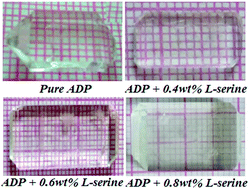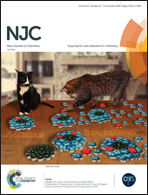Raman, photoluminescence, and a.c. electrical studies of pure and l-serine doped ammonium dihydrogen phosphate single crystals: an understanding of defect chemistry in hydrogen bonding
Abstract
Ammonium dihydrogen phosphate (ADP) crystals have a wide range of nonlinear optical applications. The hydrogen bond side chain contains dopant like L-serine causing defects in ADP. The pure and L-serine doped ADP crystals are grown using a slow evaporation technique. The powder XRD patterns show the single-phase nature of the pure and doped ADP crystals. The FT-Raman spectra show the presence of a variety of normal modes of vibrations of ADP. The photoluminescence study suggests an increase of the Stokes shift and the presence of vibrational energy relaxation phenomena. a.c. electrical studies such as dielectric, impedance and modulus spectroscopy were carried out to elucidate the behaviour of the charge carrier under the course of the alternating electrical field. The defect oriented correlated barrier hopping (CBH) conduction mechanism, the presence of grains and grain boundaries, and the non-Debye type relaxation phenomena are explained. The nonlinear second harmonic generation efficiency of the grown crystals is found to be improved on doping L-serine in ADP.



 Please wait while we load your content...
Please wait while we load your content...